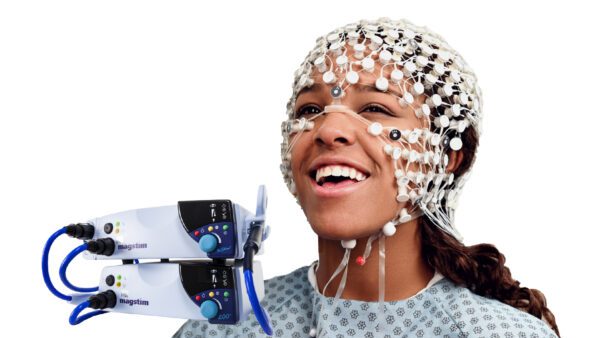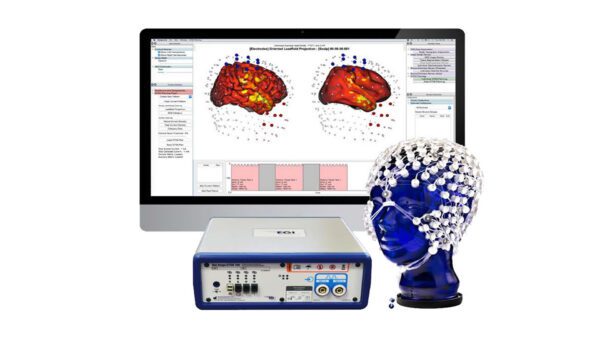Products – Software – Analysis Software – BESA
EGI is partnering with BESA to offer additional options for full featured, HD-EEG optimized data analysis.
Why BESA
BESA enables advanced data analysis for research, connectivity and MRI analysis, as well as a full integration of statistical tools. This rich feature set would require many packages to duplicate. The seamless workflow between applications minimizes complications related to using multiple packages.
BESA supports Matlab integration allowing users to take advantage of BESA while still using their favorite Matlab tool. BESA stands apart from other analysis options by offering comprehensive support including detailed tutorials, the BESA Wiki, a YouTube channel with instructional videos, and customer support supplied by experts in the field. Finally, BESA’s products are CE-certified and can be used for clinical applications in the EU. This means a rigorous testing and validation approach is followed during development.
BESA’s capabilities are divided across four applications detailed below.
Specifications
BESA Research allows full investigation of HD EEG and is the most comprehensive toolbox for EEG source localization. Features include:
- Reading and writing of multiple EEG file formats including Net Station MFF files allowing you to analyze data from multiple EEG systems in the same software
- Graphical montage editor
- Source montages for standard review, resting state networks and brain atlas regions
- Independent Component Analysis (ICA)/ Principle Component Analysis (PCA)
- Discrete or distributed source analysis using LORETA, sLORETA, swLORETA, LAURA
- SESAME, an automated localization method using Bayesian statistics
- Iterative distributed source imaging approaches including sSLOFO and CLARA
- Multiple source beamformer (in the time-domain or time-frequency domain)
I added the MFF (our data file format / icon) above the software hoping we can give some visual EGI file imagery going into the software somehow. Maybe Aaron can figure something out? If not, not a big deal.
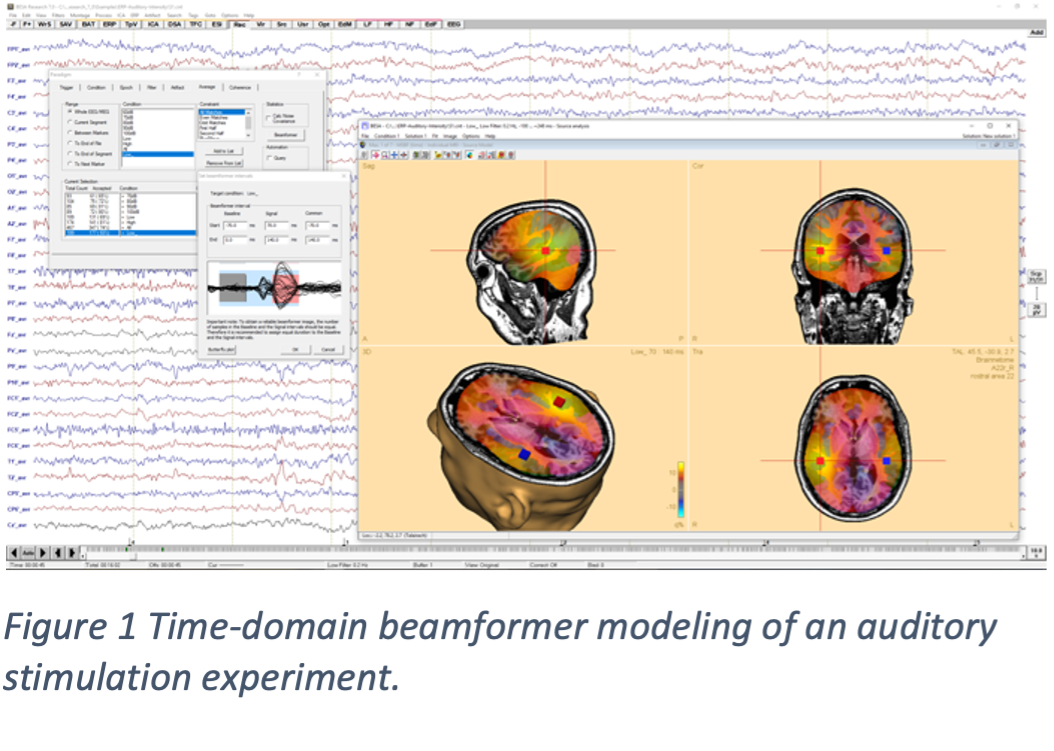
BESA Connectivity provides optimized, user-guided workflows for time-frequency and connectivity analysis of EEG data. Highlights include:
- Four time-frequency methods and nine connectivity methods supported, including Imaginary Part of Coherency, Phase Lag Index, Granger Causality, PDC, DTF
- Batch mode enabling multi-subject analysis of up to ten different conditions
- Grand Average visualization
- Direct comparison between subjects, conditions, time-frequency methods, connectivity methods
- Support for source montages as well as sensor-level data and polygraphic channels
- Several connectivity visualization modes including connectome view, circular graph view, 3D view
- Highly versatile image and video export of results
- ASCII data result export and input support for Matlab
- Full (multi-subject) project exports for direct reading into BESA Statistics
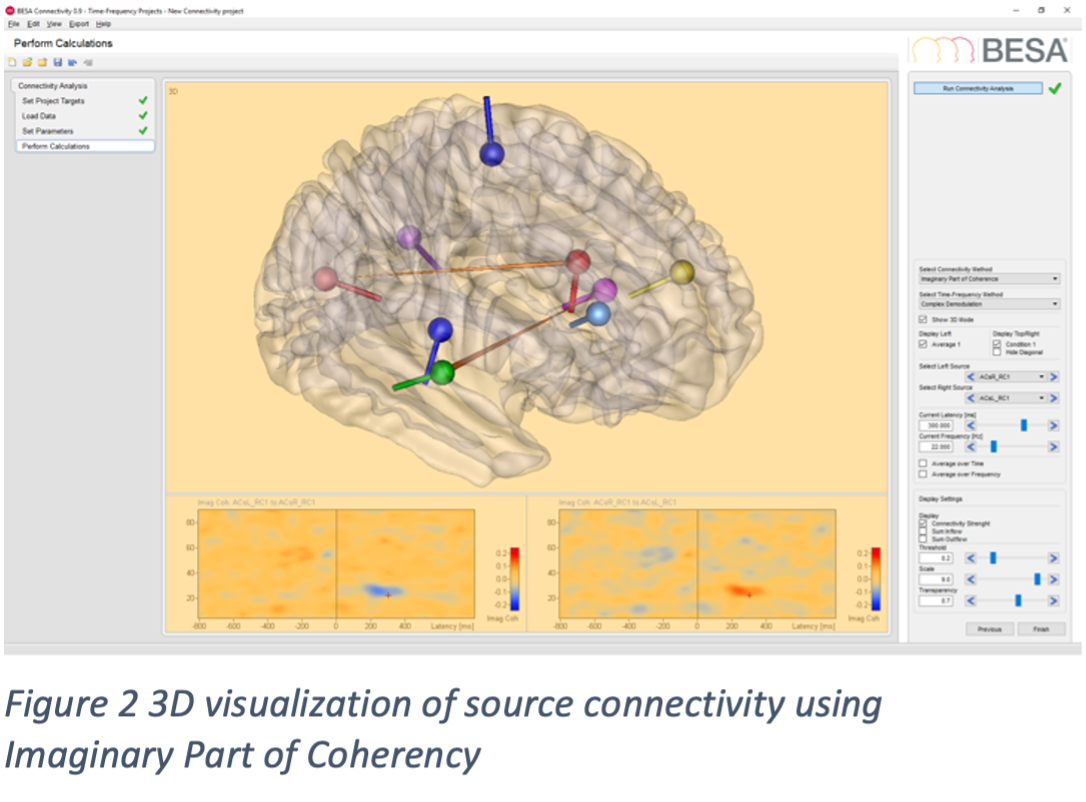
BESA MRI facilitates creation of a 4-layer individual head model and co-registration with EEG / MEG sensors. The integrated workflow concept is designed for ease of use. BESA MRI’s automatic segmentation includes an automated inhomogeneity correction to correct for scan artifacts. A high-quality cortex and scalp reconstruction with optional cortex inflation is generated for enhanced visualization.
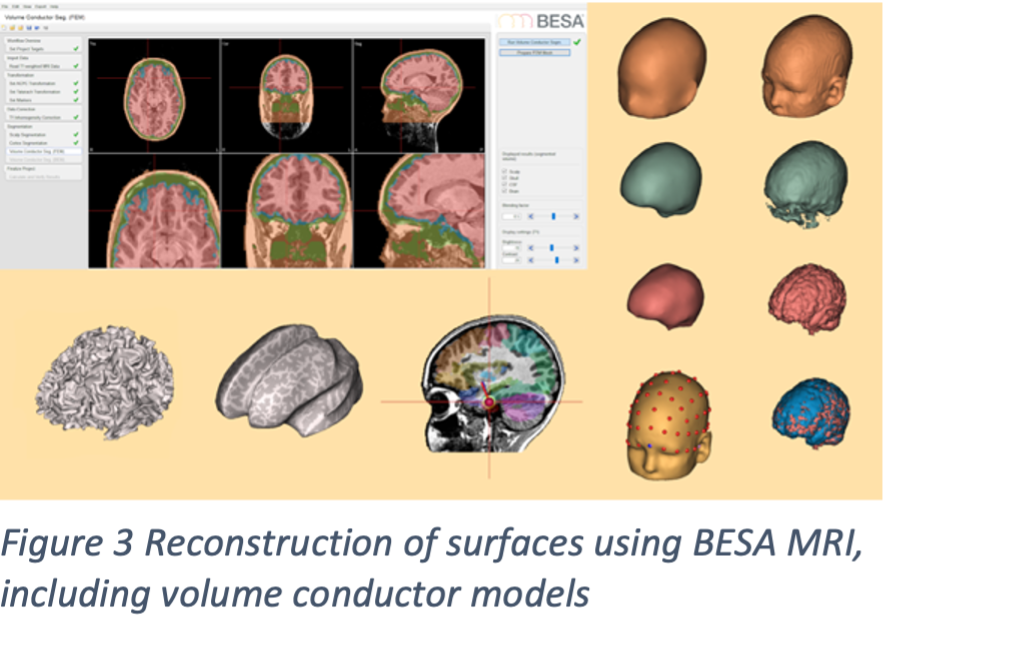
BESA Statistics intrinsically solves the multiple testing problem and runs parameter free statistics. F-Test and t-Test are available. All analyses are computed automatically with user-interaction minimized to defining time and / or frequency ranges of interest. Statistical values computed in BESA Statistics 2.1 can be directly used for scientific reports. No further analysis in other programs is needed.
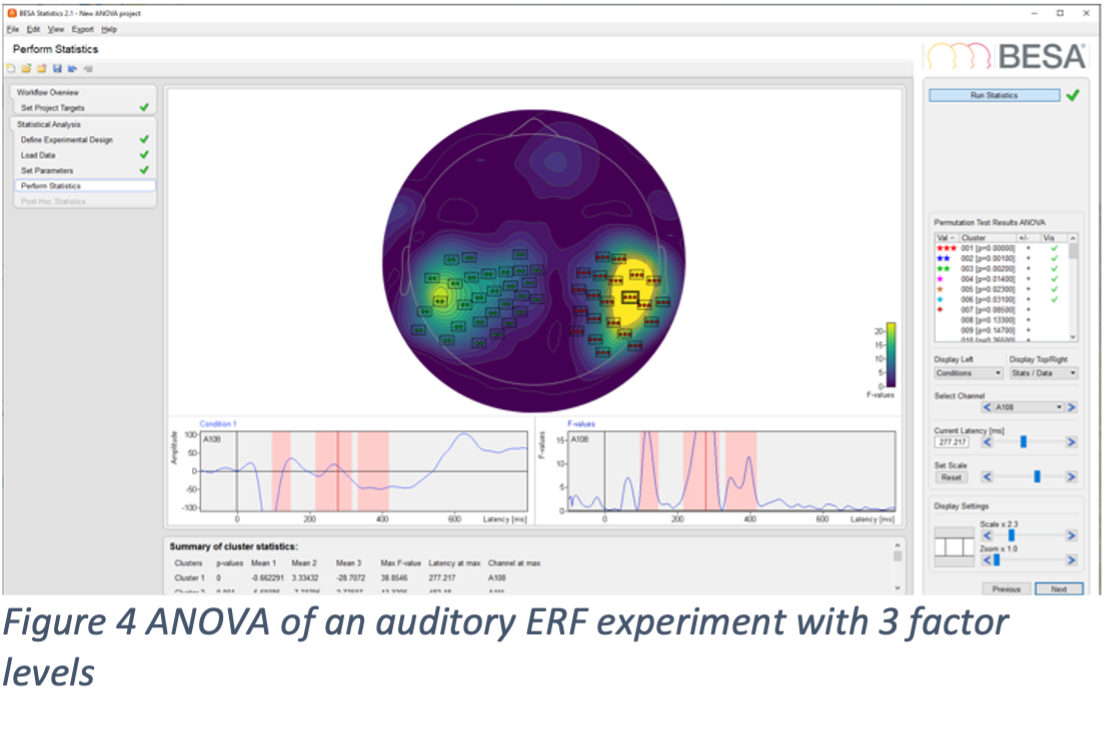
Contact Us
Contact us





